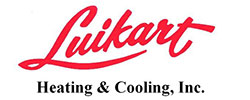
If you have a newly built house in Newark, it was probably built with energy efficiency in mind. This means greater amounts of insulation and windows and doors with improved seals. While these enhancements are fantastic for keeping your heating and cooling bills in check, they’re not so excellent for your indoor air quality.
Your HVAC system needs to run with a filter. But if you have a flat filter, you won’t be experiencing ample filtration. This style only gives the bare minimum of protection by keeping dust out of your home comfort system.
While you can upgrade to a pleated filter or one with a better MERV rating, it still might not be enough filtration, especially if someone in your house has allergies or other respiratory troubles.
That’s where a whole-house air purifier comes in. These systems are installed within ductwork to provide strong filtration across your home. Depending on the model you choose, you’ll be able to remove allergens, odors and even some viruses under certain airflow conditions.
Here are our favorite solutions from Lennox, an industry leader in air purification.
Best Air Purifiers from Lennox
1. HEPA Air Purifiers
A HEPA air purifier, like the Healthy Climate® High-Efficiency Particulate Air Filtration System, delivers premium filtration. These filters were first developed to shield scientists as they worked on the atomic bomb. Today, they’re a staple in hospitals and other medical settings.
The Healthy Climate HEPA Filtration System includes a three-step filtration process. A prefilter attracts significant pollutants before the HEPA filter traps the rest of tiny irritants. Then, a charcoal filter eradicates odors and chemical vapors.
The PureAir™ S Air Purification System is compatible with all HVAC brands and easily links to your smart home. It combats the three leading types of indoor air irritants:
- Airborne particles
- Chemical odors and vapors
- Germs and bacteria, under certain airflow conditions
This air purifier can remove 99.9%* of pollutants, like mold spores, pollen, dust and pet dander. It’s also effective at decreasing or eradicating 90%1 of flu and cold viruses under certain airflow conditions. And, based on laboratory and field studies, it removes and eliminates approximately 50% of residential odors and chemical vapors within 24 hours.
The PureAir S includes sensing features that make it easy to keep up. When paired with an iComfort® S30 smart thermostat, you’ll receive an alert to install a new filter and UVA light.2 This home air purifier must be linked with communicating Lennox systems and the iComfort S30.
2. Media Air Cleaners
Lennox Healthy Climate® Media Air Cleaners come in in a variety of MERV ratings to work with your needs. This rating measures how capable filters are at removing contaminants. The greater the number, the greater the filtration.
The Healthy Climate Carbon Clean 16® Media Air Cleaner is recommended for homes with allergy suffers and pets. This is a HEPA filter air purifier, since it has a MERV 16 rating for hospital-strength filtration. And it removes more than 95%3 of aggravating particles from your home’s air.
The Healthy Climate 13 Media Air Cleaner is great for families who desire enhanced protection from viruses and bacteria. This filter removes 99% of larger particles including dust, pollen and lint. And up to 54% of finer particles down to 0.3 microns.4
The Healthy Climate 11 Media Air Cleaner is a a great air purifier for allergies and in homes with pets. It eliminates more than 87% of bigger particles down to 3 microns and more than 28% of finer ones down to 0.3 microns.4 It’s able to provide this strong filtration without increasing the cost of using your heating and cooling system.
These three media air cleaners can be used with any brand of HVAC system. However, it’s essential to be aware that some of the denser ones, like MERV 16 and 13, may restrict your system’s airflow. This can hike up your utility costs.
3. UV Air Purifiers
The sun’s UV rays are the fault of why you get a blistering sunburn. But this kind of light has a useful application when installed within your ductwork. It’s also tough enough to eliminate germs, mold and fungi under certain airflow conditions.
In actuality, the Healthy Climate UV Germicidal Light can decrease the concentration of airborne microorganisms by 50% in as short as 45 minutes.5 This light damages cell structure, which stops these microorganisms from growing and spreading throughout your residence.
And this UV air purifier can also help keep your home comfort system clean and running like it should. It eliminates of germs, mold and fungi hiding inside ductwork and your system itself. This UV light air purifier accomplishes all this work without making lung-inflaming ozone.6
Breathe Healthier Air with the Assistance of Our Air Purification Specialists
Your household’s comfort and health matters to us at Luikart Heating & Cooling. We are aware there are a lot of options out there. That’s why we make it uncomplicated to work with our indoor air quality pros. We specialize in making solutions that match your needs and budget, and we’d love to find out more about your residence and your air quality problems. Call us at 740-344-5497 today to begin.
1Based on laboratory and field studies.
2PureAir™ S requires the iComfort® S30 and a communicating indoor unit.
3Leading consumer magazine, January 2012. Based on the published CADR, which is the standardized measurement system to determine the cubic feet of clean air produced per minute. Particles captured range in size down to 0.3 micron. One micron = 1/25,000 of an inch in diameter.
4Based on lab tests conducted on filters with conditions included in ASHRAE standard 52.2 for E1 and E3 size ranges.
5Based on constant circulation of air in the home, 3,000-square-foot home with a 5-ton air handler.
6U.S. Environmental Protection Agency, “Ozone Generators that are Sold as Air Cleaners: An Assessment of Effective and Health Consequences,” August 2006.
